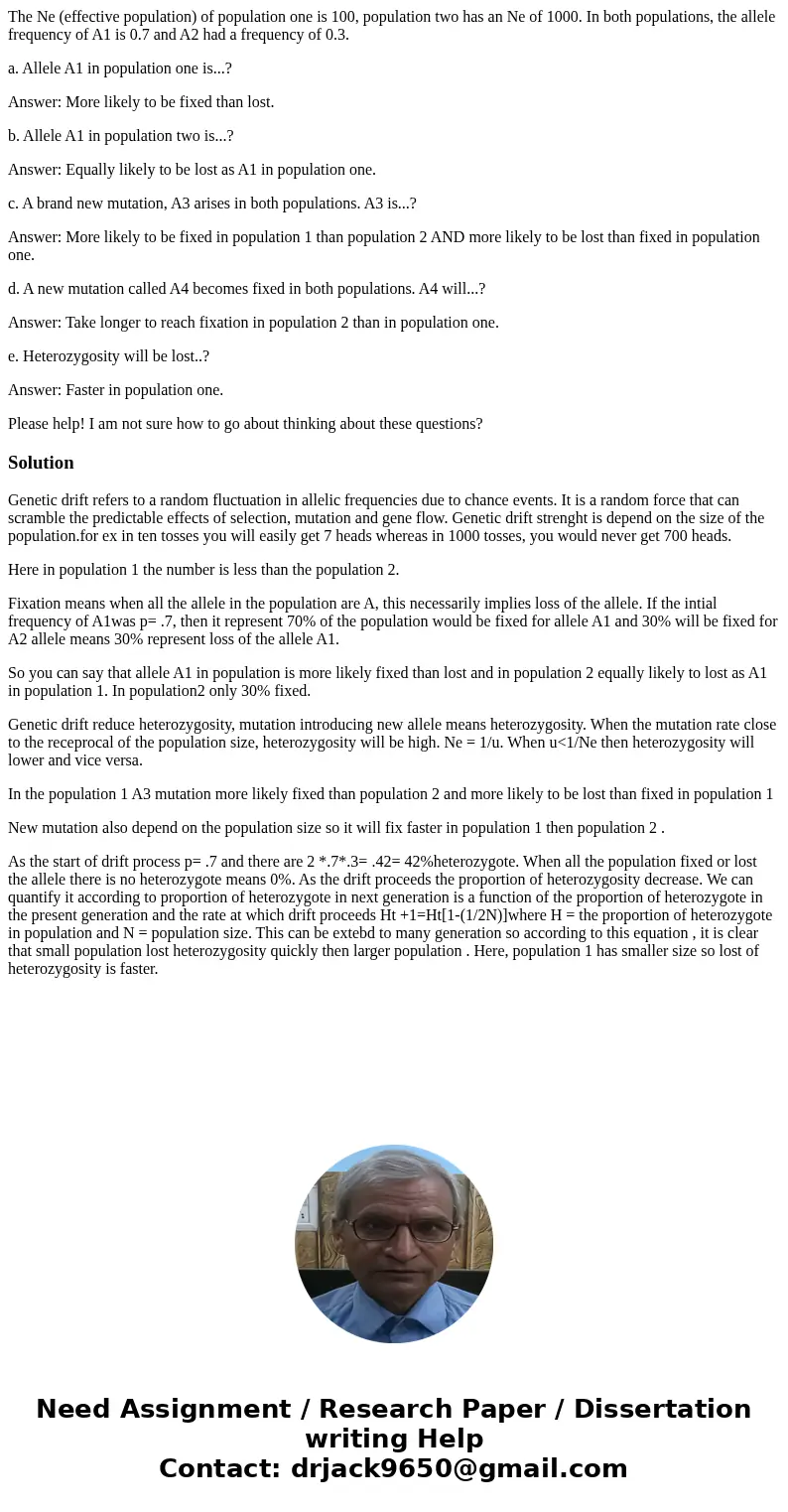The Ne effective population of population one is 100 populat
The Ne (effective population) of population one is 100, population two has an Ne of 1000. In both populations, the allele frequency of A1 is 0.7 and A2 had a frequency of 0.3.
a. Allele A1 in population one is...?
Answer: More likely to be fixed than lost.
b. Allele A1 in population two is...?
Answer: Equally likely to be lost as A1 in population one.
c. A brand new mutation, A3 arises in both populations. A3 is...?
Answer: More likely to be fixed in population 1 than population 2 AND more likely to be lost than fixed in population one.
d. A new mutation called A4 becomes fixed in both populations. A4 will...?
Answer: Take longer to reach fixation in population 2 than in population one.
e. Heterozygosity will be lost..?
Answer: Faster in population one.
Please help! I am not sure how to go about thinking about these questions?
Solution
Genetic drift refers to a random fluctuation in allelic frequencies due to chance events. It is a random force that can scramble the predictable effects of selection, mutation and gene flow. Genetic drift strenght is depend on the size of the population.for ex in ten tosses you will easily get 7 heads whereas in 1000 tosses, you would never get 700 heads.
Here in population 1 the number is less than the population 2.
Fixation means when all the allele in the population are A, this necessarily implies loss of the allele. If the intial frequency of A1was p= .7, then it represent 70% of the population would be fixed for allele A1 and 30% will be fixed for A2 allele means 30% represent loss of the allele A1.
So you can say that allele A1 in population is more likely fixed than lost and in population 2 equally likely to lost as A1 in population 1. In population2 only 30% fixed.
Genetic drift reduce heterozygosity, mutation introducing new allele means heterozygosity. When the mutation rate close to the receprocal of the population size, heterozygosity will be high. Ne = 1/u. When u<1/Ne then heterozygosity will lower and vice versa.
In the population 1 A3 mutation more likely fixed than population 2 and more likely to be lost than fixed in population 1
New mutation also depend on the population size so it will fix faster in population 1 then population 2 .
As the start of drift process p= .7 and there are 2 *.7*.3= .42= 42%heterozygote. When all the population fixed or lost the allele there is no heterozygote means 0%. As the drift proceeds the proportion of heterozygosity decrease. We can quantify it according to proportion of heterozygote in next generation is a function of the proportion of heterozygote in the present generation and the rate at which drift proceeds Ht +1=Ht[1-(1/2N)]where H = the proportion of heterozygote in population and N = population size. This can be extebd to many generation so according to this equation , it is clear that small population lost heterozygosity quickly then larger population . Here, population 1 has smaller size so lost of heterozygosity is faster.

 Homework Sourse
Homework Sourse